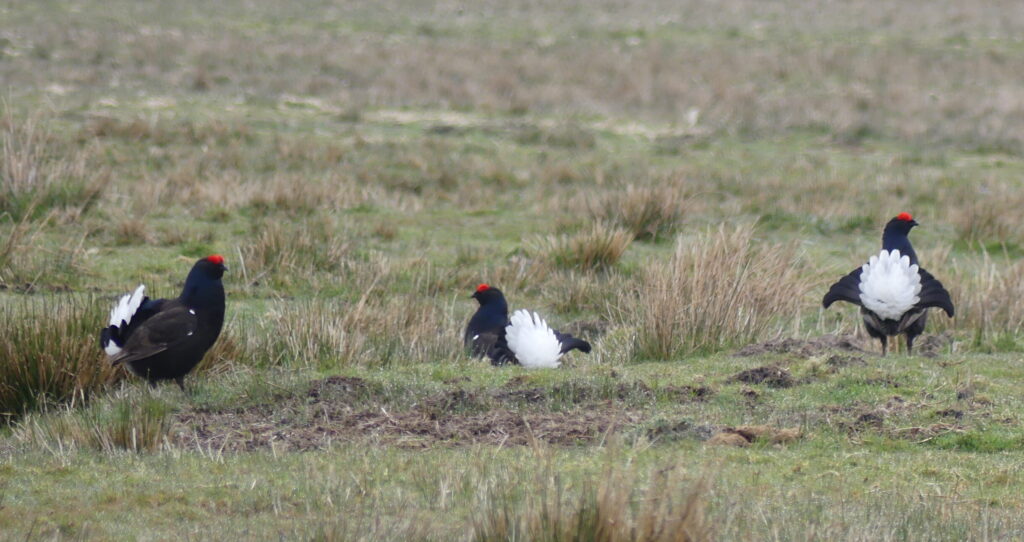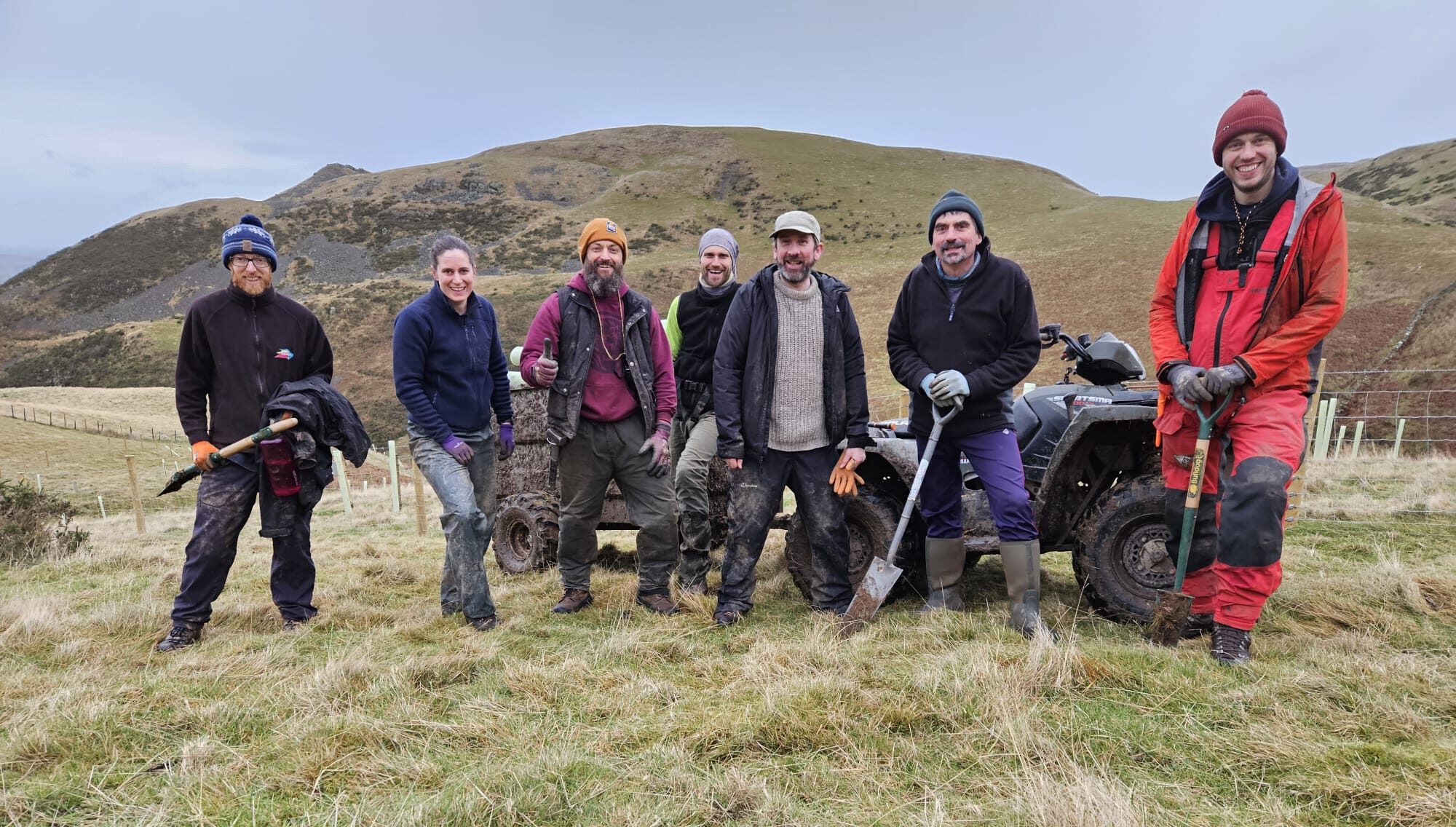News
Lek there be love
16 April 2025
Lek there be love
Love is in the air for black grouse because April and May are the bird’s breeding season and the time of the ‘lek’. The lek refers to the gathering of male grouse to perform a fascinating mating ritual as well as the area where they gather. In fact, black grouse gather at leks for most of the year to show dominance but in spring the female grouse arrives.
During a lek, the male black grouse really shows off with a dance to attract a female. It all begins before dawn. The males assemble on areas with low vegetation and rush about, do little jumps, fight against each other and sometimes fly over the lek. All the while, they have their striking tail feathers on display. The black feathers are fanned out with the contrasting white under-tail feathers raised vertically in the middle.

And there’s more, as the red wattle above the eyes of the male black grouse becomes enlarged and the bird makes two distinct courtship calls. They make a burbling sound and a guttural hiss.
The female grouse have the control as they choose the mating partners who have impressed them the most. The males and females don’t bond and it is left to the females to nest and raise the chicks.
Black grouse is an endangered species in the UK and is on the Red List of birds most threatened with extinction. Their population decline is due to different reasons such as predators and overgrazing from sheep. Many of the remaining birds in England are found in the uplands of the North Pennines.
Black grouse requires different habitats and are often found on the edges of upland heather moor and woodland. They nest on open ground but retreat to woodland in the winter months for shelter and to eat berries such as rowan, hawthorn and juniper as well as the buds of trees such as birch and hazel.

The North Pennines National Landscape team has carried out a tree planting project which supports nature recovery, taking into consideration the black grouse population. In Ousby, Cumbria, the team planted 4100 trees on 8.73 hectares of land. On five of those hectares they changed their planting approach especially for black grouse. There was a lower planting density of only 400 trees per hectare and 20% of the area was open space. 1600 trees were a mix of species suitable for the bird and included alder, downy birch, rowan, bird cherry, hawthorn, aspen and willow. Planting trees is critical to the survival of black grouse, particularly in harsh winters; the team therefore created a suitable woodland habitat for the bird. Staff members and contractors also put up fences around the newly-planted trees to protect them from livestock. The fences have bird strike markers, which are small, shiny metal squares, to stop grouse and other birds flying into them. This project was funded by the Forestry Commission’s England Woodland Creation Offer grant. Usually projects for this grant involve planting at least 1100 trees per hectare but lower tree numbers are accepted in areas where the black grouse is found.
Find key tips for watching a lek here: black grouse birdwatching







